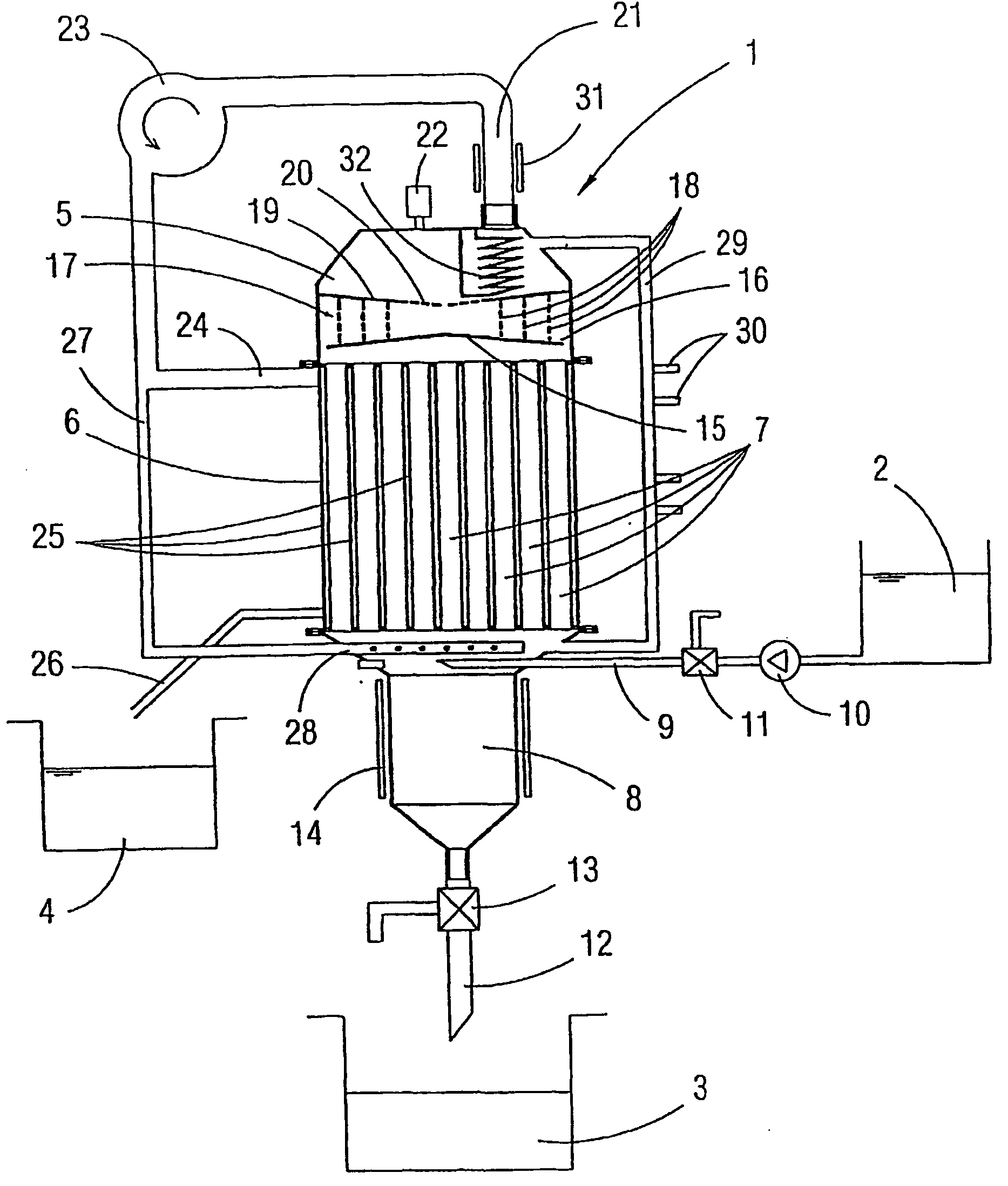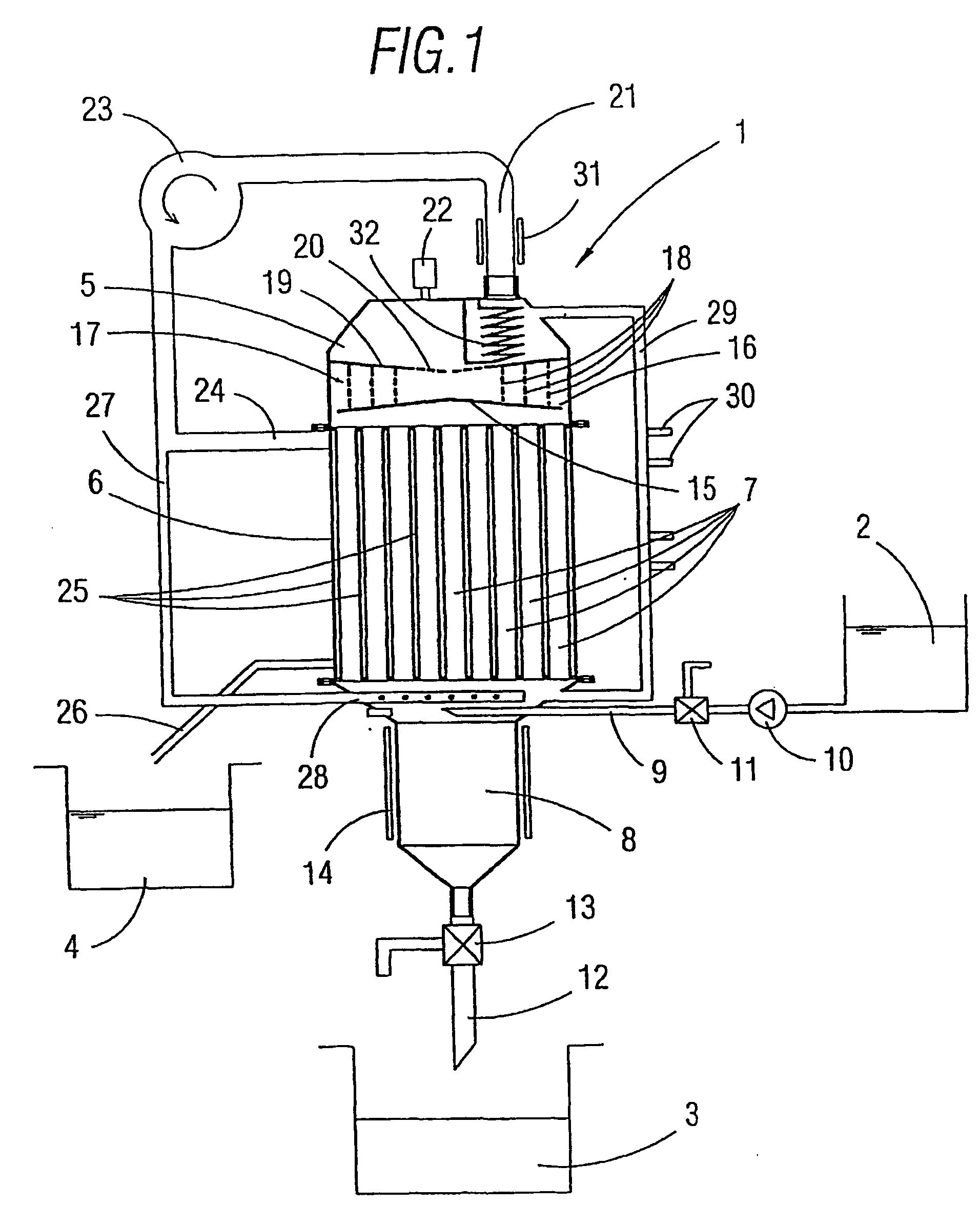Distiller for liquids, liquids distillation method and equipment for treating sewage, which equipment includes said distiller
a technology for distillers and sewage, applied in distillation separation, water/sludge/sewage treatment, vapor condensation, etc., can solve the problems of sewage having a very high level of contamination, requiring periodic maintenance and substantial storage space, and conventional treatment systems used at treatment plants and other similar facilities are not useful for this application
- Summary
- Abstract
- Description
- Claims
- Application Information
AI Technical Summary
Benefits of technology
Problems solved by technology
Method used
Image
Examples
Embodiment Construction
[0015] The objective of this invention is to resolve the disadvantages mentioned by developing a distiller for liquids and equipment for treating the sewage which, from the point of view of energy expenditure and space occupation, satisfactorily resolves the problems of elimination of sewage on moving equipment, such as railway rolling stock.
[0016] In accordance with a first aspect of this invention a distiller is proposed for liquids, characterised in that the liquid-feed means keep the tubes full of liquid up to a predetermined level, and in that said distiller further includes means for inducing turbulence in the liquid which is in the tubes.
[0017] These characteristics permit the problem of treatment of sewage with high contaminant content to be resolved by a process of distillation based on mechanical compression of the steam, while at the same time resolving the problems of energy consumption and large size.
[0018] It is important to note that in this description the term “t...
PUM
| Property | Measurement | Unit |
|---|---|---|
| temperatures | aaaaa | aaaaa |
| pressure | aaaaa | aaaaa |
| diameter | aaaaa | aaaaa |
Abstract
Description
Claims
Application Information
 Login to View More
Login to View More - R&D
- Intellectual Property
- Life Sciences
- Materials
- Tech Scout
- Unparalleled Data Quality
- Higher Quality Content
- 60% Fewer Hallucinations
Browse by: Latest US Patents, China's latest patents, Technical Efficacy Thesaurus, Application Domain, Technology Topic, Popular Technical Reports.
© 2025 PatSnap. All rights reserved.Legal|Privacy policy|Modern Slavery Act Transparency Statement|Sitemap|About US| Contact US: help@patsnap.com



